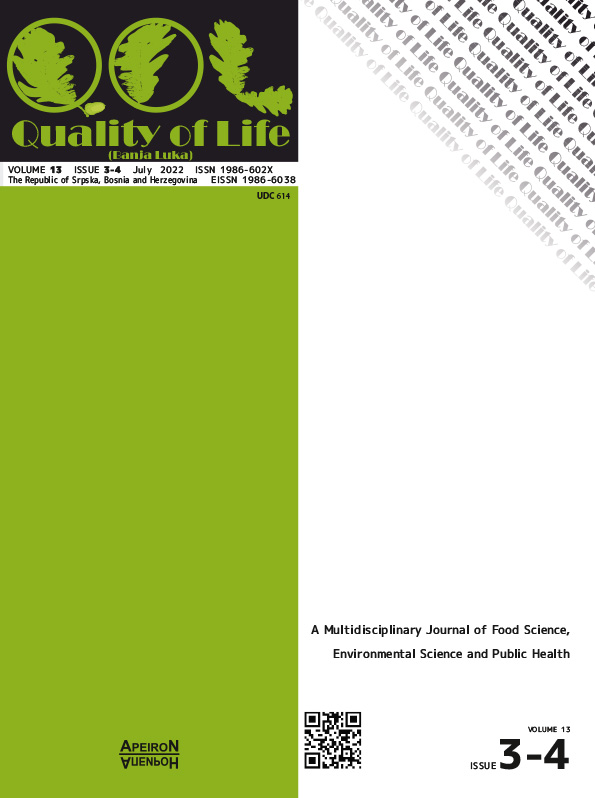The Incidence of Contrast Induced Nephropathy in Major Trauma Patients in the University Clinical Center of the Republic of Srpska
DOI:
https://doi.org/10.7251/QOL2203114GAbstract
Contrast-induced nephropathy (CIN) is characterized as an acute renal injury after the administration of intravascular iodinated radio-contrast medium in the absence of any other etiology. There is a small number of studies that analyze the occurrence and impact of CIN in traumatized patients who require whole-body CT according to the polytrauma protocol. In the period from January 2021 to May 2022, patients in the University Clinical Center of the Republic of Srpska who underwent CT according to the protocol for polytrauma were retrospectively analyzed. The study included 51 patients. CIN was defined as a 25% rise from baseline creatinine, or an absolute increase in creatinine of ≥ 44 µmol/l 24–48 h after administration of contrast. Of the total number of patients, 12% (n = 6) met the criteria for CIN. Age, sex, comorbidity, severity of injury based on ISS (injury severity score) were analyzed. Hemoglobin and fibrinogen levels, length of hospitalization, stay in the intensive care unit, mortality were monitored. A value of p < 0.01 was considered statistically significant. CIN is common in traumatized patients, but it is not an independent risk factor for length of hospitalization or mortality.
